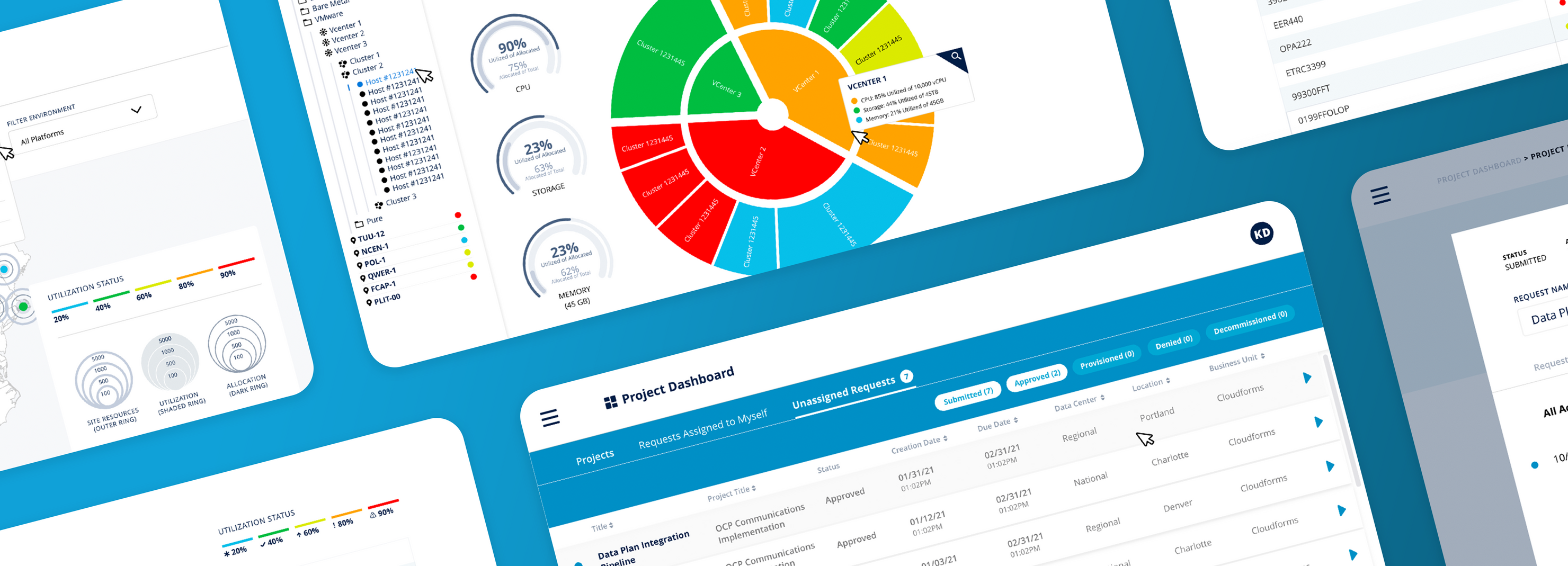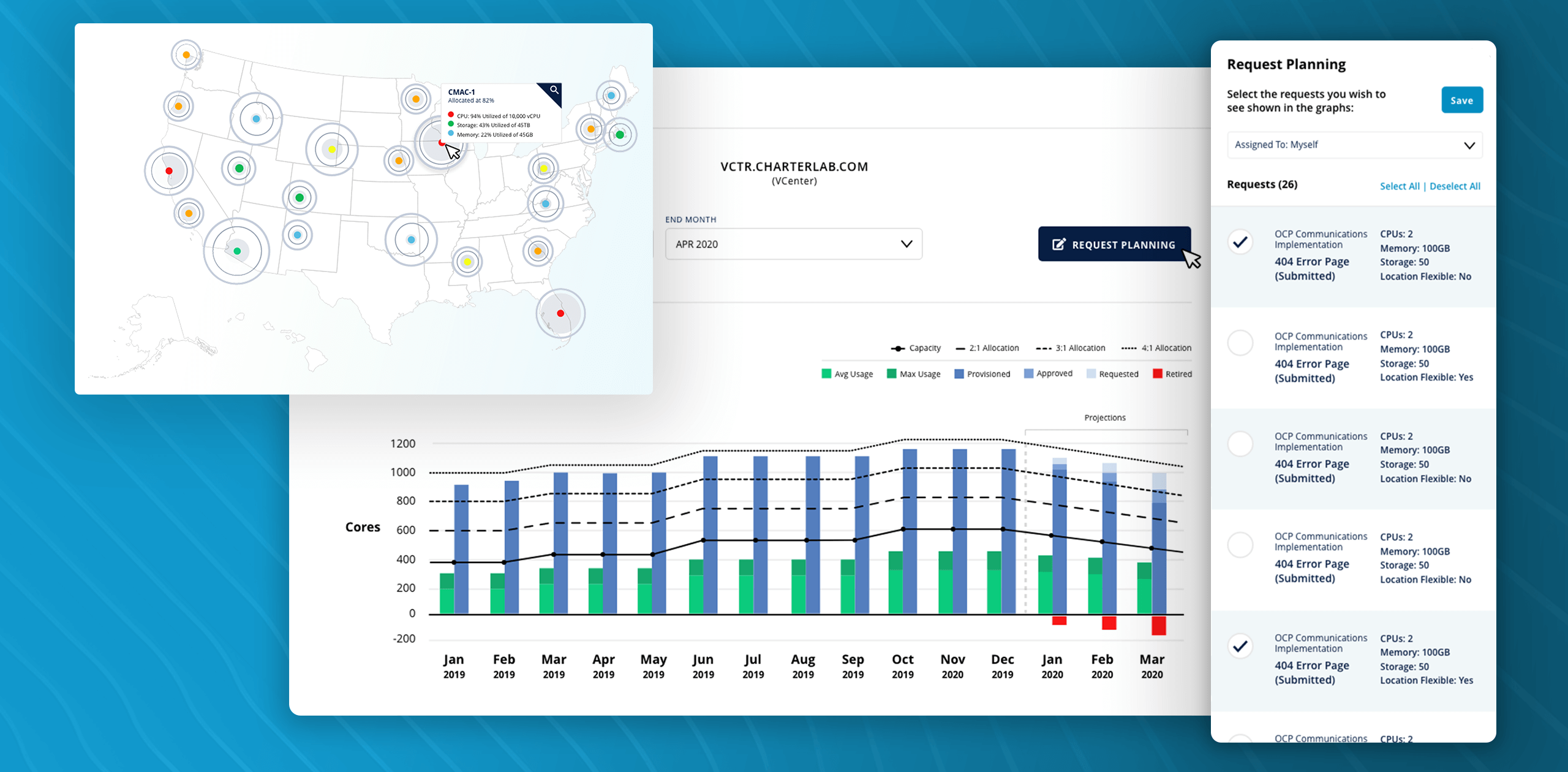
We helped Charter Communications design and develop a custom application where resource requests are approved based on custom forecasting and trend models.
The Charter capacity planning team uses this information to make accurate predictions of resource needs. While we continue to iterate on the application, they can begin to justify large infrastructure spending that helps them stay ahead.
Setting up cloud compute resource infrastructure all over the country is not an easy task.
It takes investment, time, and technical expertise. Missteps can cost tens of thousands of dollars.
Charter Communication’s capacity planning team came to Devetry with the challenge of multiple data sources, and no way to visualize all the data comprehensively.
The team needed a way to take resource requests and examine historical/current resource usage data to accurately plan for resource needs. This tool would incorporate current utilization, planned decommissions, and future requests to display forecast models that would empower the team to stay ahead of the need.
Charter Communications needed a custom application to easily and accurately predict future resource utilization so they could plan ahead for additional resource needs and confidently approve requests.

DEPT® built (and continues to build) Charter Communications a capacity planning application that aggregates historical allocation and usage data. The application organizes the information using ETL scripts which incorporate digestible data into the application database. The data is then displayed in trend charts so the team can see how capacity utilization changes over time.
Using an algorithm that incorporates yearly trends along with more recent historical data, the graphs display future usage predictions that also incorporate pending request data (planned, provisioned, and decommissioned).
Later this year, we will be working on a portal that allows end-users to ‘request’ capacity, and an admin side that can ‘approve’ it. This enables them to see ‘the future’ capacity because we know what the requests are, and how long they will be provisioned for.
Confidently & accurately justify resource spending
Aggregated allocation, utilization, and capacity data are now viewable all in one place.
The Capacity planning team can see all requests without making siloed approvals on resources.
Requests are associated with projects allowing the admin team to see the rolled-up capacity needs of a given project. (CPU, RAM, Storage)
Each request enables the requestor and admin to communicate about a specific request and notifies the admin and requestor when changes on that request are made.
The new request form requires requesters to provide all the information necessary for provisioning before submission.
Requests made within very specific parameters are auto-approved saving the Capacity Planning team time on reviewing requests.
The Charter team can more confidently and accurately justify resource spending based on the modeling algorithm
Overall, this capacity planning application helps the Charter team avoid the rush of implementing new resources in an unreasonable time frame.



